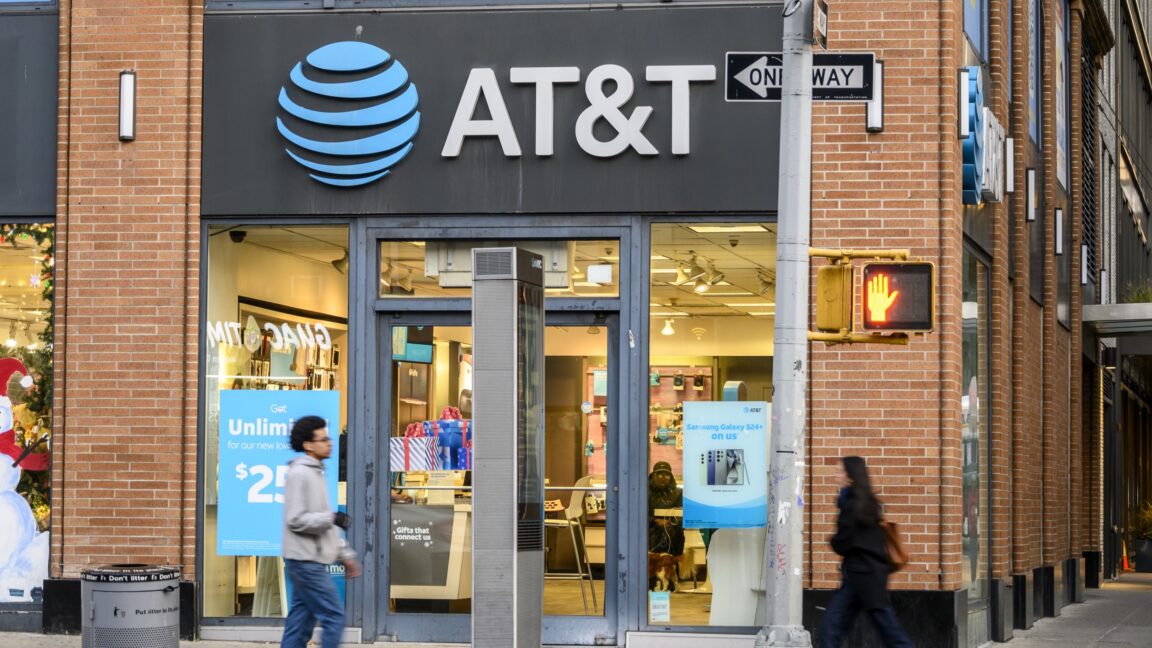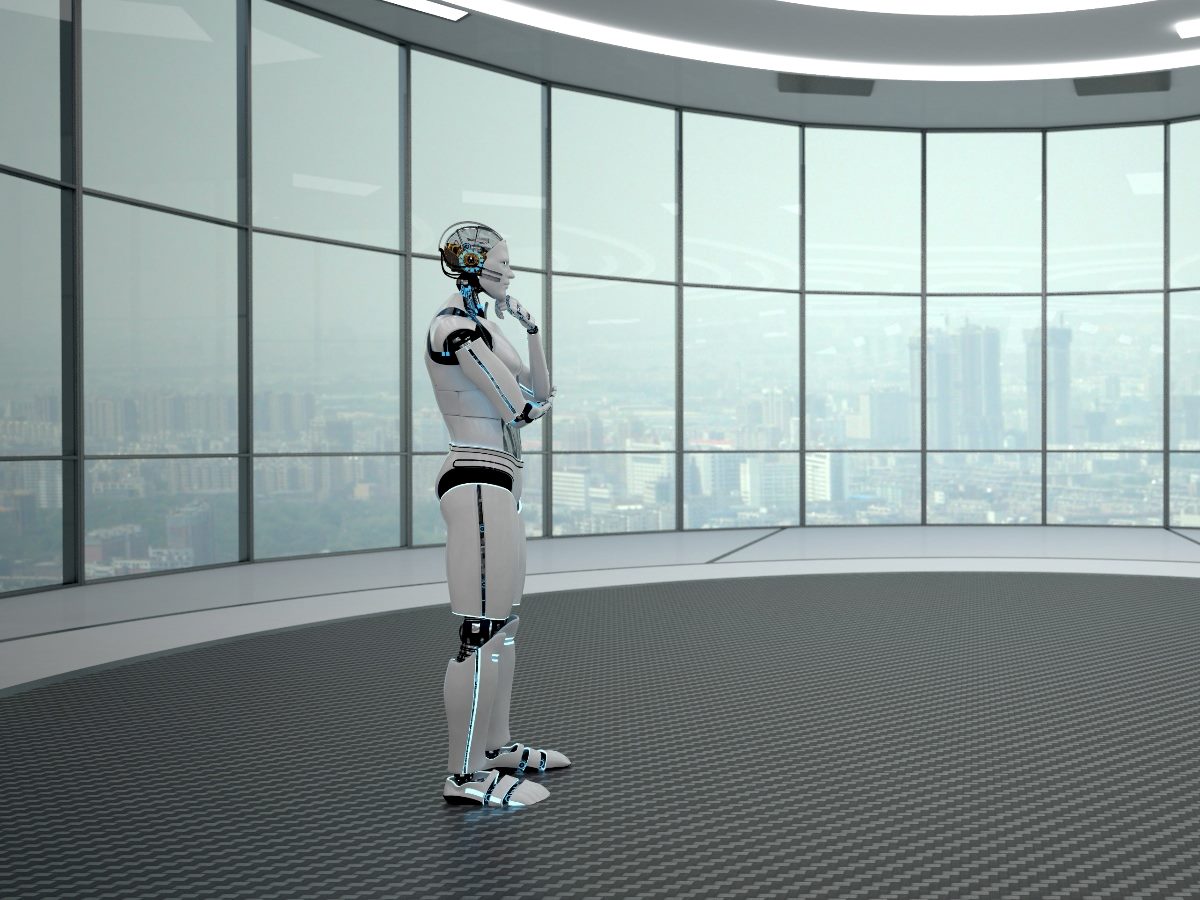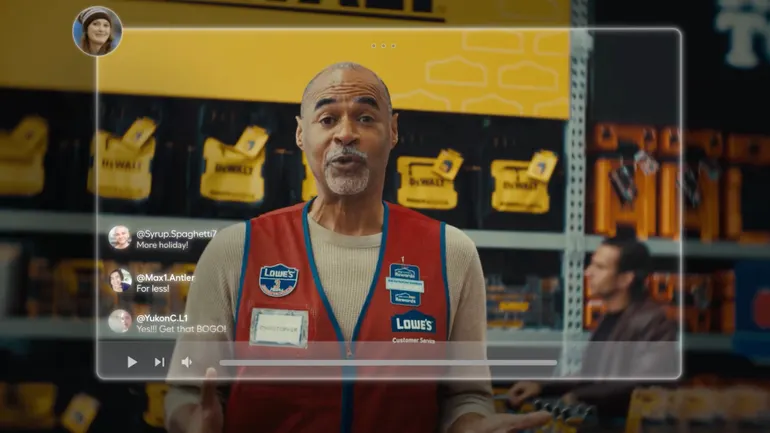Marketing
Marketing
[ follow ]
#advertising #influencer-marketing #seo #public-relations #branding #ai-advertising #holiday-marketing
fromwww.socialmediatoday.com
1 day agoSnapchat Shares Data into Evolving Grocery Shopping Trends
Snapchat has shared some new research into the latest grocery shopping trends, and how shoppers' habits are evolving within the food and non-alcoholic beverage space, which could be worth noting in your marketing approach. Based on a survey of over 6k people, Snapchat, in partnership with WPP Media and Ipsos, has identified several key trends that food and beverage brands need to understand in order to maximize their opportunities.
Marketing
fromwww.housingwire.com
17 hours agoStop marketing like it's 2008: You're invisible
It's Thursday afternoon in 2025. You're setting up a booth at a Realtor appreciation event, maybe your third one this year. You paid $2,500 for the table. Dozens of agents drift by. Three stop. One takes a koozie without even looking up. By six o'clock you're loading candy and koozies back into your car and calling it brand awareness. You'll do it again next quarter.
Marketing
Marketing
fromThe Drum
6 hours agoLinkedIn uncovers the key frameworks for successful account-based marketing
Account-based marketing (ABM) aligns sales and marketing, delivers superior ROI, and LinkedIn provides platform tools and a partner ecosystem to execute ABM across demand, nurture, pipeline, and penetration.
fromModern Retail
21 hours agoBehind True Religion's Gen-Z playbook, from Snapchat to college tours
A staple of the early-aughts, True Religion has benefitted from larger cultural nostalgia around Y2K. But now, the brand isn't just resonating with its core demo of millennials - it's starting to make inroads with Gen Z, too. While those ages 25-45 have been a key demographic for True Religion, about six months ago, the brand noticed that people ages 18-25 were shopping it more, Kristen D'Arcy, the brand's chief marketing officer and head of digital growth, told Modern Retail.
Marketing
fromThe Drum
10 hours agoSkype's quiet death is a loud warning for marketers
Microsoft confirmed it will shut down Skype this May, slipping the news into an update with all the fanfare of a software patch. A flat note: "Starting in May, Skype will no longer be available. Continue your calls and chats in Teams." No grand farewell. No tribute to one of the most culturally significant tech brands of the internet era. And that silence is telling.
Marketing
Marketing
fromThe Drum
1 day ago'Butterfly effect' customer journeys: how algorithms change everything
Algorithm-driven personalization and fragmented media consumption cause small campaign changes to produce large, unpredictable effects across the consumer journey, complicating targeting and brand outcomes.
fromFast Company
1 day agoWhy networking is still the most powerful tool in business
We live in a world moving at the speed of AI, where everything is changing all at once. As we streamline every aspect of life to be faster and more efficient, it only makes sense to modernize how we network. Before you overhaul your networking style, it's important to remember the fundamentals, then build on them with new skills. Networking is everywhere, all the time
Marketing
fromForbes
2 days agoOmnichannel Marketing: A Short Guide For Growing B2B Tech Brands
As customers' journeys grow more complex and non-linear, I've found that it's no longer enough to simply appear on multiple platforms: The platforms must be interconnected. A true omnichannel strategy allows business leaders to present customers with a unified and consistent experience across multiple channels and touchpoints. HockeyStack's recent B2B research indicates that the number of impressions and touchpoints required to close a deal increased by 9.5% and 19.8%, respectively, from 2023 to 2024.
Marketing
fromThe Drum
2 days agoJudge of the Day: Joe Public's Claudi Potter says creativity must be protected
On the media side, it's a gift: optimization at scale, smarter targeting, real-time reporting. It's the stuff that used to eat entire departments for breakfast, now handled in seconds. But when we let it run the creative floor, that's where things get messy,
Marketing
fromDigiday
3 days agoHow brands are trying to optimize, outsmart AI answer engines across the zero-click landscape
The phrase 'Google it' may not hold the same weight in the age of AI-powered search engines. Increasingly, shoppers are turning to AI platforms like Google AI Overviews, Gemini and OpenAI's ChatGPT to discover, research and even purchase products. The shift is reshaping brand visibility. 'There's been a marked shift in awareness: brands are realizing that years of hard-earned search equity are being reshaped overnight as AI moves from search engines to answer engines,'
Marketing
Marketing
fromLondon Business News | Londonlovesbusiness.com
3 days agoThe element of distinction: Isolating your brand in a crowded market - London Business News | Londonlovesbusiness.com
A professional logo on chemical packaging establishes trust, signals technical competence, and creates immediate market recognition for suppliers and buyers.
fromPsychology Today
4 days agoLeading Generation Z? Don't Think "What," Think "Why"
I bet you remember when Nike first began using their catchphrase: "Just Do It!" It was 1988, and this tagline could be found everywhere. It was a challenge to act, to initiate, to take a risk, to move forward even if it's hard. After 37 years, Nike is reintroducing this iconic rallying cry to Generation Z, but they are tailoring their message to the Gen Z mindset: "Why Do It?" It is customized to meet young athletes where they are.
Marketing
fromGeeky Gadgets
4 days ago9 ChatGPT Marketing Hacks from the Best in the Business
It's not just their creativity or hustle, it's their ability to embrace innovative tools that give them a competitive edge. Enter ChatGPT, the AI powerhouse that's quietly transforming the way elite marketers work. Imagine crafting hyper-targeted campaigns in minutes, uncovering hidden customer insights, or predicting market trends with uncanny accuracy. These aren't futuristic dreams, they're the everyday reality for marketers who know how to harness the full potential of AI.
Marketing
fromBerlin Startup Jobs
4 days agoJob Vacancy: Creative AI Transformation Lead // Blinkist | Marketing & Communications Jobs | Berlin Startup Jobs
You'll spearhead our company-wide shift to AI-first creative, building and operationalizing a pipeline that transforms how we conceive, produce, test, and analyze content across Performance Marketing, CRM, and Brand. This is about elevating team capabilities, driving innovation at scale, and setting a new benchmark for what creative can achieve. This role requires both strategic thinking and hands-on execution. You'll be shaping the future of creative work at Blinkist, delivering real impact while pushing the boundaries of what's possible.
Marketing
fromFast Company
4 days agoHuman stories break through
Over the last two years, the value of content has collapsed. Thanks to the LLM revolution, the internet is drowning in an avalanche of indistinguishable output: an endless parade of fast-food writing, recycled reports, and SEO-bait fluff optimized for algorithms instead of people. That's why the only competitive moat left is the human story. For business leaders, this creates an urgent mandate: Storytelling is no longer a marketing tactic. It's a strategic business imperative-the only reliable engine for changing minds and shifting behaviors.
Marketing
fromMarTech
4 days agoGamification has promise and pitfalls | MarTech
Gamification is one of those shiny objects that periodically captures companies' attention - a tactic that promises to boost engagement and revenue metrics. After all, everyone else seems to be doing it, so why not your company, too? At its core, gamification means applying game design elements in non-game contexts to tap into human motivation - boosting engagement and participation over time. In marketing, that can translate into higher revenue, stronger loyalty and longer customer lifetime value.
Marketing
fromDigiday
4 days agoBrands set to cut open web display spend 30% in response to AI search
We expect that fewer consumers will be landing on the web pages where most of that display inventory has historically existed, and so there will just be fewer monetizable audiences there to begin with,
Marketing
fromDazed
4 days agoDazed Studio takes home several prizes at the 2025 Lovie Awards
The Lovie Awards recognise Europe's internet communities across culture, technology and business - and while they may not be as high-profile as the Oscars or Grammys, you've likely seen the winning work everywhere. Take Dazed Studio's Hinge: No Ordinary Love campaign, for example - last year, the stories spotlighting true dating app love stories were inescapable, especially to those who ride the New York City subway.
Marketing
fromwww.forbes.com
5 days ago3 Skills That AI Start-Ups Are Paying Up To $200,000+ For Right Now
If you believed AI startups and the world's greatest AI-forward tech companies are just hiring engineers, data scientists, and developers, you're clearly missing out. Behind tech powerhouses and AI house names like OpenAI, Anthropic, and other smaller AI startups from Silicon Valley to Europe, there are three skills that repeatedly show up on these companies' career pages and are evidently in strong demand.
Marketing
fromModern Retail
4 days agoHow brands and retailers are planning their marketing spend during the holiday season to avoid diminishing returns
Despite the emergence of October sales events and December's strong sales performance last year, Black Friday remains the premier event for retailers. Last year, the NRF found that an estimated 197 million consumers, up from their initial prediction of 183.4 million, shopped during the five-day holiday weekend between Thanksgiving and Cyber Monday. As this holiday shopping weekend maintains its crown as the tentpole event for consumers, retailers continue to react in kind, focusing a significant amount of their ad dollars around Black Friday.
Marketing
Marketing
fromBusiness Insider
4 days agoDuolingo's CEO highlighted this year's swarm of green owl Halloween costumes
Duolingo's viral mascot-driven cultural relevance accelerates product adoption and retention while the company remains primarily focused on building a highly retentive, effective language product.
fromTasting Table
4 days agoHow A Bakery Renovation Inspired Raising Cane's Well-Known Logo - Tasting Table
Creating a successful company logo is a multifaceted magic trick, combining marketplace wisdom with personal intuition and a splash of creativity. Most restaurants start from scratch, hoping the design resonates with customers - but that's not always the case. The founder of one beloved fast-food chicken chain got an unusual gift of logo inspiration when remodeling a building. While uncovering traces of history and mystery, entrepreneur Todd Graves discovered a fascinating mural from which the logo of Raising Cane's arose.
Marketing
fromForbes
5 days agoThe Death Of The Target Audience
In a world of fluid identities and real-time data, personas are obsolete. B2B is no different from B2C in the sense that we are marketing or selling to individuals. Those individuals are humans, with their own past experiences, preferences, prejudices and personalities-and all of those things impact the way they receive and interpret information, and their propensity to buy at any time. Rigid personas flatten complexity and miss nuances, and when overused, potentially even alienate prospects and limit revenue opportunities.
Marketing
fromThe Drum
6 days agoThe media reason there will be a surge in 'anti-woke' brands
Fast-forward to today and the original DTC wave has since dissipated. Digital and social customer acquisition costs are much higher, driving traffic is more competitive, direct-to-consumer is no longer a differentiator, and venture capital has significantly dried up now that money is no longer dirt cheap. It would seem that the large brands and the rest of the market have closed the last remaining ad arbitrage opportunities-or have they?
Marketing
Marketing
fromMashable ME
5 days agoInstagram's new "Competitive Insights" feature lets you track competitor activity across Reels, Posts and Ads; How to use
Instagram added 'Competitive Insights' to the Professional Dashboard, letting Business and Creator accounts compare follower growth and posting frequency with up to ten competitor profiles.
Marketing
fromwww.mercurynews.com
5 days agoDowd: How Madison Ave. is modeling the friendships waning in society
Celebrity-driven advertising is foregrounding affectionate male friendships, portraying nostalgic buddy bonding that counters contemporary concerns about male loneliness and declining friendships.
fromHubspot
7 months agoThe tactical shift that led to 35,000% higher visibility on LinkedIn
Sam Meller is the Head of Social for The Hustle, but we briefly got to borrow her for Masters in Marketing, because she makes everything she touches better. That's how I got a chance to hear about a tactical content shift that led to a startling 35,000% increase in visibility on LinkedIn. When I heard this story, y'all, I threw an Asana card on our editorial calendar so fast I nearly broke my clickin' finger.
Marketing
[ Load more ]



















